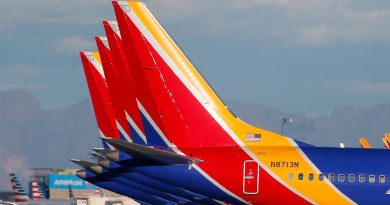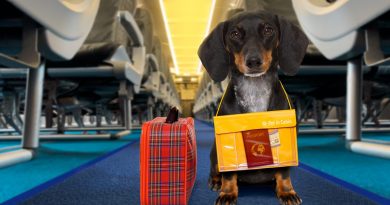Airlines devise ways to avoid Russian airspace: Travel Weekly
United has suspended two routes to India. Finnair has slashed its Asia service. And Japan’s All Nippon Airways suspended London and Paris flying.
But despite those changes, which are a result of Russia’s invasion of Ukraine, analysts say that the need for airlines to avoid Russian airspace won’t have a major overall impact on commercial flying, particularly where U.S. passengers are concerned.
“It’s an inconvenience, something we can live without, but we will find solutions to it,” said John Grant, senior analyst for the air travel data provider OAG.
Russia has blocked access to its airspace for the airlines of 36 countries, including the U.K., EU nations and Canada. In addition, the airlines of many countries not among those 36 nations, including the U.S., are avoiding Russian airspace out of caution.
But while steering clear of that enormous swath of skyway will impact many Europe-Asia routes, it will only be a major hurdle on U.S. flights to a few destinations, most notably India, according to analysts. In addition, airline operations from the U.S. to several of the other markets for which flight plans would be most impacted, such as mainland China, Hong Kong, Tokyo and Seoul, South Korea, are still either deeply curtailed due to Covid-related restrictions or suspended entirely.
John Cox, a retired US Airways captain who is now an aviation industry consultant, mentioned Chicago-Shanghai as the type of route that would have required flight path adjustments to avoid Russian airspace. United and China Eastern flew that route pre-Covid, but no airline is currently serving the route. Similarly, there is currently no nonstop U.S.-Hong Kong service, though six airlines operated in that market three years ago, serving a total of eight U.S. cities, Cirium flight schedule data shows.
Still, the absence of having Russian airspace as a flight path option is already having some consequences for flyers and airlines alike, even on U.S. service.
United has suspended flights between San Francisco and Delhi and between Newark and Mumbai due to the challenges of operating those routes without overflying Russia. The carrier continues to fly two other India routes but with altered flight paths.
For example, instead of its usual polar flight path between Newark and Delhi, United is now operating the flight on a nearly straight line, south of Russia and across Saudi Arabia. The flight is taking approximately 30 minutes longer than Air India’s Newark-Delhi flight because Air India continues to fly through Russian airspace.
Similarly, FlightAware data shows that airlines are altering routes on some East Asia-U.S. routes. For example, Korean Airlines has flattened its Seoul-New York JFK flight path to stay southeast of Russia.
With U.S. jet fuel prices at their highest since 2014, modest changes in flight plans could still have a marked impact on airline operating costs. But even among some European carriers, which are generally having to alter more routes than U.S. airlines, the impact will be negligible, according to Lufthansa Group CEO Carsten Spohr. Higher fuel costs will largely be countered by savings in the overflight fees Russia charges, Spohr said during a March 3 earnings call.
However, not all airlines are getting off easy. Finnair has said that it will need to furlough at least 90 pilots and 150 cabin crew due to its suspension of flights to Russia and over Russian airspace. The carrier has suspended Osaka, Japan, and Hong Kong service until at least late April and has also had to make substantial flight path changes to service other Asia routes.
Similarly, All Nippon didn’t fly Tokyo-London or Tokyo-Paris last week and will maintain those suspensions through at least March 15.
But Cox said that for the most part, international travelers from the U.S. aren’t likely to experience major connection difficulties, even when going through the large European gateways.
“If you’re flying KLM, Lufthansa, British Airways, Iberia, Air France; you’re not going to see a whole lot of impact,” he said.
Source: Read Full Article



